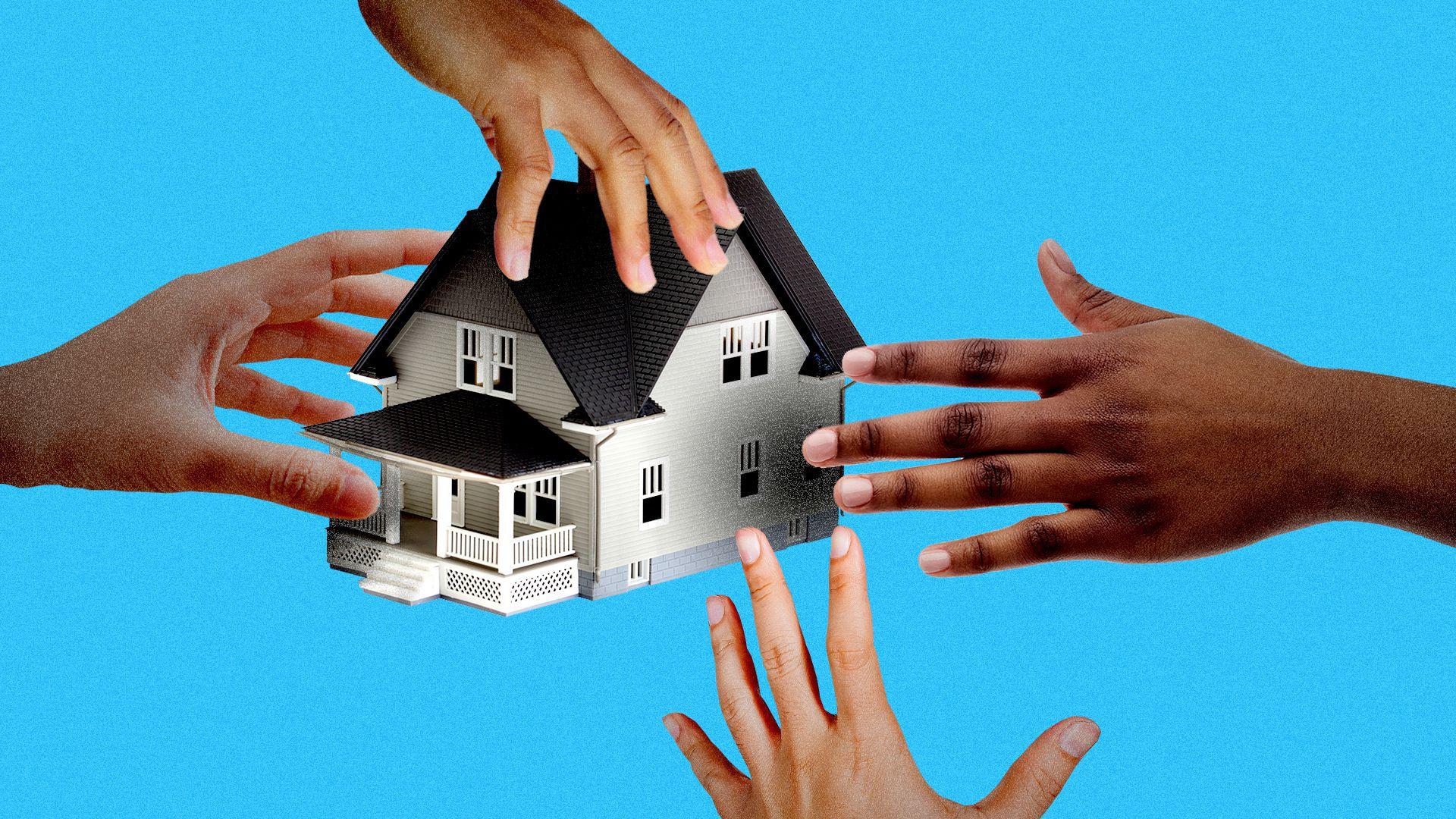NEW YORK – The current economic downtown has been odd in so many ways. Why shouldn’t it expose some economic myths and misconceptions as unreliable, if not outright untrue?
When it comes to understanding the relationships involving home prices, bank deposits, interest rates and unemployment, many disconnects arise. Here are a few:
High unemployment and home prices
You might think that as the nation’s unemployment rate has spiked during this social-distancing recession, that would put pressure on home prices, forcing some owners to miss payments and discouraging buyers.
So far, that hasn’t been apparent. Home prices were up 2.5% on average this year through April, according to S&P CoreLogic Case-Shiller.
Low interest rates, which make homes more affordable, are one factor supporting prices. Also, stimulus and other government payments have enabled millions of Americans to meet their obligations. Plus, the economic slump has lasted only about four months so far, so the full impact may not have been felt yet. If the economy recovers strongly from here, negative housing fallout might not materialize in a big way.
Still, it does seem like the other shoe could drop. Fitch Ratings, the credit-rating agency, currently sees home prices nationally as 6.1% overvalued based on recent price increases, heightened unemployment and the possibility of lower incomes and rents. Values are most frothy in Nevada, Idaho, North Dakota, Texas and Arizona, Fitch said.
The degree to which housing might become more overvalued depends on the future path of unemployment and personal incomes, said Suzanne Mistretta, a Fitch senior director.
The company sees the U.S. unemployment rate easing to 7.8% next year from an average 10.3% in 2020. Though not approaching overvaluation levels of 20%-plus from 2005 to 2007, housing still could reach its highest level of overvaluation in a decade, Fitch warned.
Federal deficits and interest rates
Many people used to assume widening federal deficits would exert a crowding-out effect, pushing interest rates higher as the supply of debt mushroomed and private savings were siphoned from other investments. Few people seem to be focused on this connection anymore, given that interest rates keep dropping while Washington’s borrowing needs continue unabated.
One explanation for why the link doesn’t seem to work is the lack of inflation, as inflation and long-term interest rates tend to move together.
Another is the preference among investors for owning government bonds, which carry high credit ratings, during periods of heightened uncertainty. When things get tough, investors get nervous. They snap up government bonds with preservation of capital, not yield, as the primary goal.
As the Tax Foundation noted in a 2016 report, some economists had been suggesting that budget deficits reduce economic growth by boosting interest rates and diverting private saving toward the purchase of government debt. But in practice, “It has been hard to find an empirical link between deficits and increased interest rates or reduced investment,” the group concluded.
Rates are even lower, and deficits higher, today.
Low yields and deposit accounts
You would think that with bank deposit accounts, money-market mutual funds and other risk-averse instruments yielding next to nothing, investors would be ready to move their money elsewhere. But so far, millions of people are willing to accept virtually no yield so long as their assets remain safe.
Bank deposits spiked by $1.2 trillion in the first quarter, the most recent figure tracked by the Federal Deposit Insurance Corp. That was nearly four times the size of any other quarterly deposit gain over the past decade. Americans also have been flocking to money-market funds and other risk-averse instruments. Money-fund assets are up more than $1 trillion so far this year, reports Money Fund Intelligence newsletter.
It’s not like risky stock-market investments have been faring all that poorly. The broad market was up roughly 43% from its recent low in late March through July 9. But for a lot of people, safety reigns supreme – and they’re willing to pay a price for it, in low returns.
College graduates and layoffs
Before the recession, the vast majority of people with bachelor’s degrees who wanted jobs could get them. As recently as March, the national unemployment rate for college graduates was 2.5%. That was well below comparable figures for less-educated Americans, such as the 4.4% rate for people with only a high school diploma.
College graduates also typically earn more – $1,248 a week on average for holders of bachelor’s degrees only, compared with $746 for those with a high school diploma only, according to a May update by the Bureau of Labor Statistics.
However, that picture has changed a bit amid this coronavirus-induced economic slump. The unemployment rate for college grads more than tripled overnight to 8.4% in April and 7.4% in May before easing to 6.9% in June, according to the Department of Labor.
That’s still well below comparable rates for less-educated groups, such as the 12.1% June unemployment rate for high-school graduates. (The department also tracks workers based on whether they have some high school attainment and some college.)
Still, it lays to rest, at least temporarily, the notion that college graduates are immune from layoffs or other career bumps, especially amid an economic backdrop as strange as this one has been.
Saving money during recessions
You might think now would be a tough time to save money. During recessions and other periods of high unemployment, more people are financially stressed, the reasoning goes. It would be the time for many individuals to lean on their savings to help make ends meet.
That might be the case for a lot of people, but it certainly doesn’t tell the whole story. The nation’s savings rate often has climbed during recessions, and while real-time numbers aren’t available yet, that could be the case again.
Part of this might reflect a reluctance or lack of opportunity to spend money. Think how much you have saved in recent months by eating at home rather than at restaurants, not taking vacations and so on. Perhaps many people also are making a genuine effort to get their budgets under control by putting off various types of spending.
It’s not just individuals, either. A March survey of corporate finance officers conducted by the Association for Financial Professionals noted the largest increase in three years of businesses holding short-term investments at banks.









